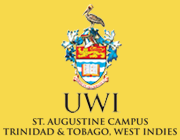Organic Chemistry
Ramish Pingal – Laboratory Manager
Selected Publications
- Effects of Jasminum multiflorum leaf extract on rodent models of epilepsy, motor coordination and anxiety, Addae, J.I.; Pingal, R.; Walkins, K.; Cruickshank, R.; Youssef, F.F.; Nayak, S.B. Epilepsy Research 2017, 131, 58–63.
- Pingal, R. Iwokrama Fungal/Plant Bioprospecting Project 2000-2003- A Model for the Future? In Bioprospecting-Successes, Potential & Constraints; Paterson, R.M., Lima, N., Eds.; Volume 16 of Topics in Biodiversity and Conservation; Springer: 2017; pp 167-196.
- Limonoids from Swietenia macrophylla and S. aubrevilleana, Mootoo, B.S.; Ali, A.; Motilal, R.; Pingal, R.; Ramlal, A.; Khan, A.; McLean, S.; Reynolds, W.F. J.Nat. Prod. 1999, 62, 1514-1517.
- 3-Aminospirosolane Alkaloids from Solanum arboreum, Maxwell, A.; Pingal, R.; Reynolds, W.F.; McLean, S. Phytochemistry 1996, 43, 913-915.
Research Interest
My research is centred on the exploration of biologically active natural compounds from terrestrial plants, bacteria and filamentous fungi. Of special interest are plants used in traditional medicine. The objective of this research is to identify natural products with antimicrobial, anticancer and insecticidal properties and systematically modify their structures in an effort to enhance their bioactive characteristics. In this pursuit, benchtop bioassays as well as modern chromatographic and spectroscopic techniques are employed to isolate and characterize bioactive metabolites.
I am also interested in the preparation of tri and tetrasubstituted pyrazolines with antimicrobial activity.
The microbial work is done in collaboration with colleagues in the Department of Life Sciences to identify bioactive metabolites capable of inhibiting the growth of MRSA and other bacterial pathogens.
Russel Ramsewak – Senior Lecturer
Selected Publications
- Ramsewak, R.S.; Nair, M.G.; King, S. K.; Stommel, M.; Selanders, L.C. Method and Compositions for Treatment of Fungal Nail Disease. U.S. Patent 6 344 190 B1,2002.
- Fowles, R.; Mootoo, B.S.; Ramsewak, R.S.; Lough, A.; Reynolds, W.F. 3,6 – Di-O – acetylswietenolide 0.25 hydrate. Acta Cryst., 2007, E63, o660 – o661.
- Fowles, R.; Mootoo, B.S.; Ramsewak, R.S.; Reynolds, W.F.; Nair, M. Limonoids from Meliaceae with Lipid Peroxidation Inhibitory Activity. Natural Product Communications, 2011, 6(6), 785-787.
- Frank, J.H.; Powder-George, Y.L.; Ramsewak, R.S.*; Reynolds, W.F*. Variable-Temperature 1H-NMR Studies on Two C-Glycosylflavones. Molecules, 2012, 17, 7914-7926.
- Powder-George, Y.; Frank, J.; Ramsewak, R.S.*; Reynolds, W.F.* The Use of Coupled HSQC Spectra to Aid in Stereochemical Assignments of Molecules with Severe Proton Spectral Overlap. Phytochem. Anal. 2012, 23, 274–277.
- Fowles, R.; Mootoo, B.S.; Ramsewak, R.S.*; Khan, A. Toxicity–structure-activity evaluation of limonoids from Swietenia species on Artemia salina. Pharmaceutical Biology, 2012, 50, 264 – 267.
Research Interest
My research is focused on the discovery of biologically active compounds with varying structural diversity from terrestrial plants and marine organisms (examples 1 and 2). Specimens are collected and extracted exhaustively to yield crude extracts, which are screened in several benchtop bioassays to determine biological activity. The active extract is then fractionated using the full spectrum of chromatographic techniques, including HPLC. Structural elucidation of the pure compounds utilizes various spectroscopic techniques such as UV, IR, MS, and NMR, as well as X-ray crystallography. In conjunction with colleagues at universities abroad and our own facility at the department, these pure compounds are screened in several bioassays which include antimicrobial, antioxidant, antifeedant, anti-inflammatory, mosquitocidal, nematocidal and cytotoxicity.
In addition, biologically active compounds, which are isolated in large quantities, will be subjected to structure-activity relationship studies. This will involve the chemical modification of the compound using simple chemical reactions such as hydrolysis, esterifications, oxidations and reductions. These derivatives will then be bioassayed and the results analyzed to determine which part(s) of the molecule is responsible for the biological activity. This information is very useful for the worldwide drug discovery programme, the pharmaceutical and agrochemical industries.
Gurdial Singh – Professor
Selected publications
- 2014 Synthesis of Methanol from Methane USA 2001543,148
- 2015 Synthesis of Methanol from Methane Pat.TT/A/2015/00098
- 2016 Tetrapeptide copper catalysts capable of oxidizing hydrocarbons at room temperature US Pat 20160060292
- Synthesis of 2,3-O-benzyl-ribose and xylose and their equilibration
- Reignier Jeffrey, Gurdial Singh, Patrice G. J. Plaza-Alexander, Nadia Singh, Jonathan M. Goodman, Alessia Bacchi, Francesco Punzo
- Tetrahedron: Asymmetry, 2014, 25, 1424-1429.
Research Interests
My research interests are in the areas of carbohydrate chemistry. In this area, we have developed the propane-1,3-diylphosphate having group for the stereoselective glycosylation of pyranoses and furanoses. We are currently investigating the synthesis of cell surface carbohydrates.
I am also interested in the chiral synthesis of alcohols using a newly reducing agent. I have an interest in the synthesis and development of novel dental materials using phosphorus chemistry and in peptide and b-lactam chemistry.






